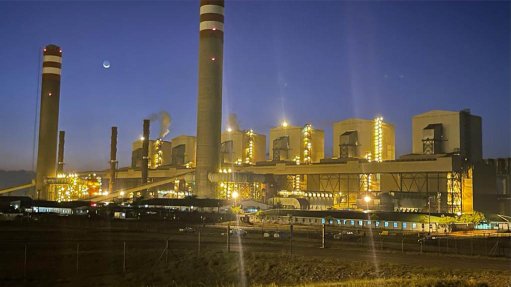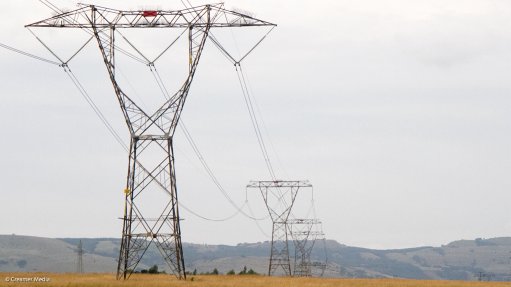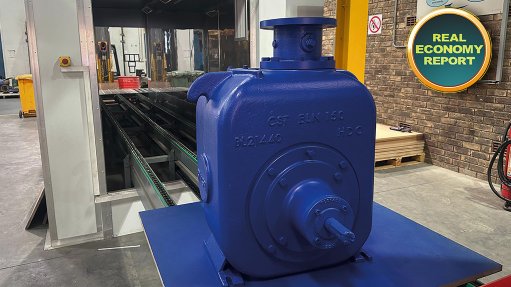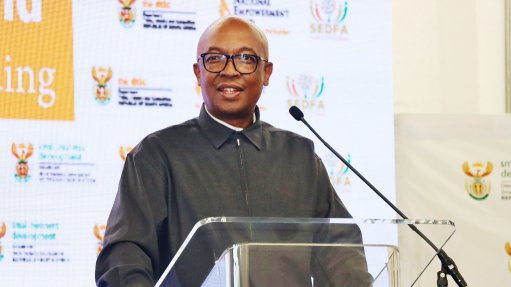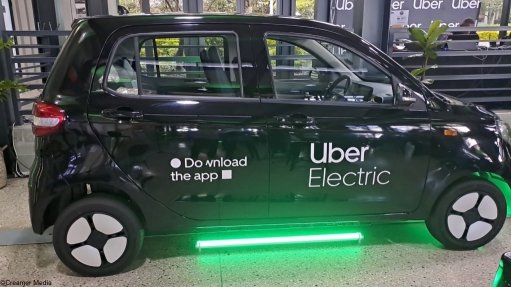IRP’s wind component could trigger yearly investments of R40bn, create 144 000 jobs by 2030
The 14.4 GW of new wind included in South Africa’s electricity plan positions the country as a “top ten” wind-energy market for the coming decade, while building capacity at the yearly tempo of 1 600 MW envisaged in the plan could attract R40-billion a year in new investment and create 144 000 fulltime jobs by 2030.
Speaking during a Team Europe Climate Diplomacy webinar on Tuesday, Vestas sales director Malte Mayer said that the wind allocation in South Africa’s Integrated Resource Plan of 2019 (IRP 2019) had placed South Africa “on the wind industry’s map again”.
“That puts South Africa, for the same time horizon to 2030, into the top ten of wind-energy countries worldwide and pretty much in the same range as some of the new growth markets, such as Brazil with 19 GW and Turkey with 12 GW,” Mayer said.
Vestas is a large Danish original equipment manufacturer, with 117 GW of wind turbines currently deployed in 81 countries, including South Africa.
Mayer said that the IRP 2019 allocation, which was the largest for any technology included in the plan, was based on the “fundamentals” of South Africa’s powerful wind resources and land availability, which made the country a good location for low-cost wind-energy production.
The allocation, he added, also reflected the need for new capacity to address South Africa’s current electricity shortages and the fact that wind could be added relatively quickly, with most projects introduced within 18 to 24 months of procurement.
Denmark’s Ambassador to South Africa, Tobias Elling Rehfeld, noted that the Scandinavian country, which is a wind-energy pioneer, had seen significant economic and employment spinoffs arise as a result of its support for the industry over the past number of decades.
Denmark, which is home to companies such as Vestas, has the highest penetration of wind globally, standing at about 47%.
Wind and solar currently contributed more than 50% of Denmark’s electricity production, Elling Rehfeld reported, adding that “we enjoy a strong 99.996% stable electricity supply, which is a number that is quite relevant here in South Africa”.
Denmark was also an “excellent showcase” of the wind industry’s job creation potential, with offshore wind-energy-related jobs having climbed from 19 000 in 2010 to 230 000 fulltime jobs by 2019.
“If we extrapolate the European numbers in accordance with the South African energy plan, we could be looking at 144 000 fulltime jobs by 2030 – and that’s just from wind,” the ambassador said, adding that many more jobs could be created in solar, biomass and so-called power-to-x sectors, such as green hydrogen.
FAST-TRACKING BW5
South African Wind Energy Association CEO Ntombifuthi Ntuli said that ramping up installed wind capacity by the 1.6 GW a year catered for in the IRP 2019 would generate additional yearly investment of about R40-billion for the country.
The immediate priority, however, was to begin implementing the Section 34 Ministerial determination with which the National Energy Regulator of South Africa recently concurred.
The determination opens the way for the procurement of 4 800 MW of wind to be added between 2022 and 2024 as well as 2 000 MW of solar photovoltaic, 513 MW of energy storage, 3 000 MW of gas- or diesel-to-power, and 1 500 MW of new coal.
Ntuli stressed that the fifth bid window of the Renewable Energy Independent Power Producer Procurement Programme, often referred to as BW5, needed to be fast-tracked not only to close the country’s current supply gap, but also to meet the timeframes outlined in the IRP 2019.
She noted that, should BW5 be launched in January 2021 as suggested by the Independent Power Producer Office, bid submissions would likely be in May, while preferred bidders would be announced probably only in July.
It could then take a further year to reach financial close, which would mean that project construction would begin only in about August 2022.
That being the case, wind farms, which typically take 18 to 24 months to build, procured under BW5 would begin commercial operation in about August of 2024.
“Therefore, we need to fast-track the plans to procure new generation capacity,” Ntuli averred.
Article Enquiry
Email Article
Save Article
Feedback
To advertise email advertising@creamermedia.co.za or click here
Comments
Press Office
Announcements
What's On
Subscribe to improve your user experience...
Option 1 (equivalent of R125 a month):
Receive a weekly copy of Creamer Media's Engineering News & Mining Weekly magazine
(print copy for those in South Africa and e-magazine for those outside of South Africa)
Receive daily email newsletters
Access to full search results
Access archive of magazine back copies
Access to Projects in Progress
Access to ONE Research Report of your choice in PDF format
Option 2 (equivalent of R375 a month):
All benefits from Option 1
PLUS
Access to Creamer Media's Research Channel Africa for ALL Research Reports, in PDF format, on various industrial and mining sectors
including Electricity; Water; Energy Transition; Hydrogen; Roads, Rail and Ports; Coal; Gold; Platinum; Battery Metals; etc.
Already a subscriber?
Forgotten your password?
Receive weekly copy of Creamer Media's Engineering News & Mining Weekly magazine (print copy for those in South Africa and e-magazine for those outside of South Africa)
➕
Recieve daily email newsletters
➕
Access to full search results
➕
Access archive of magazine back copies
➕
Access to Projects in Progress
➕
Access to ONE Research Report of your choice in PDF format
RESEARCH CHANNEL AFRICA
R4500 (equivalent of R375 a month)
SUBSCRIBEAll benefits from Option 1
➕
Access to Creamer Media's Research Channel Africa for ALL Research Reports on various industrial and mining sectors, in PDF format, including on:
Electricity
➕
Water
➕
Energy Transition
➕
Hydrogen
➕
Roads, Rail and Ports
➕
Coal
➕
Gold
➕
Platinum
➕
Battery Metals
➕
etc.
Receive all benefits from Option 1 or Option 2 delivered to numerous people at your company
➕
Multiple User names and Passwords for simultaneous log-ins
➕
Intranet integration access to all in your organisation












